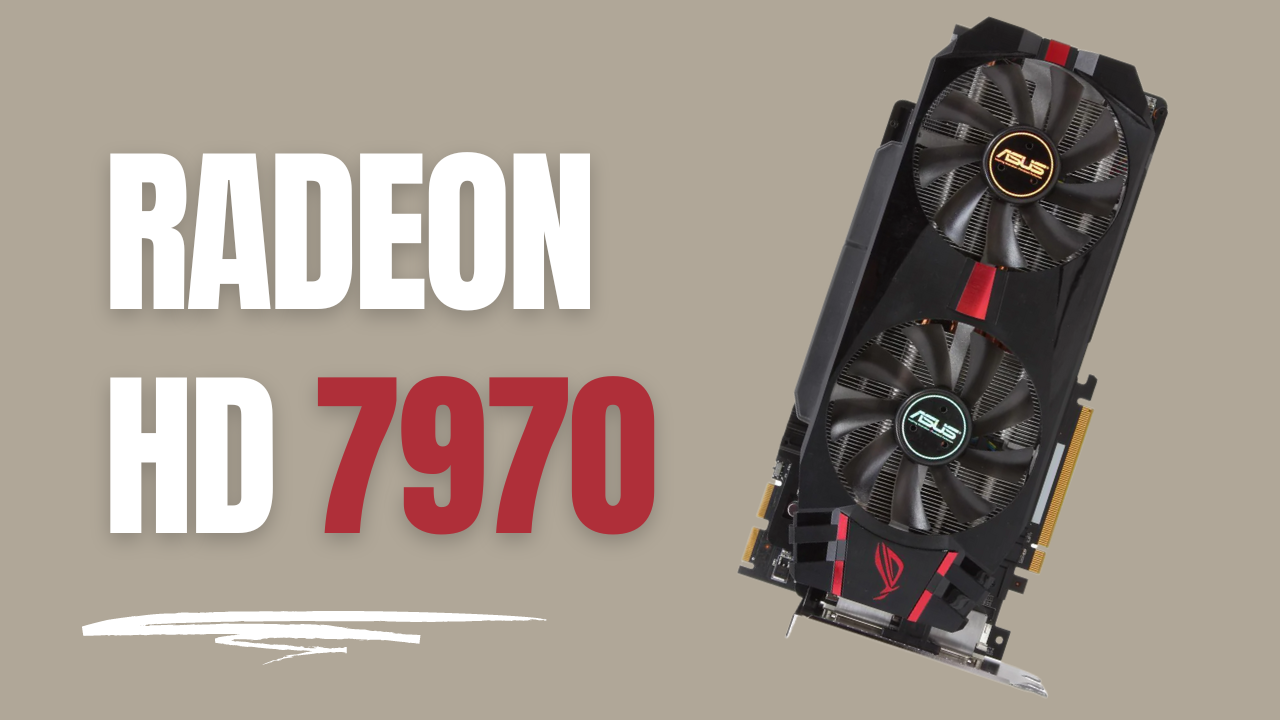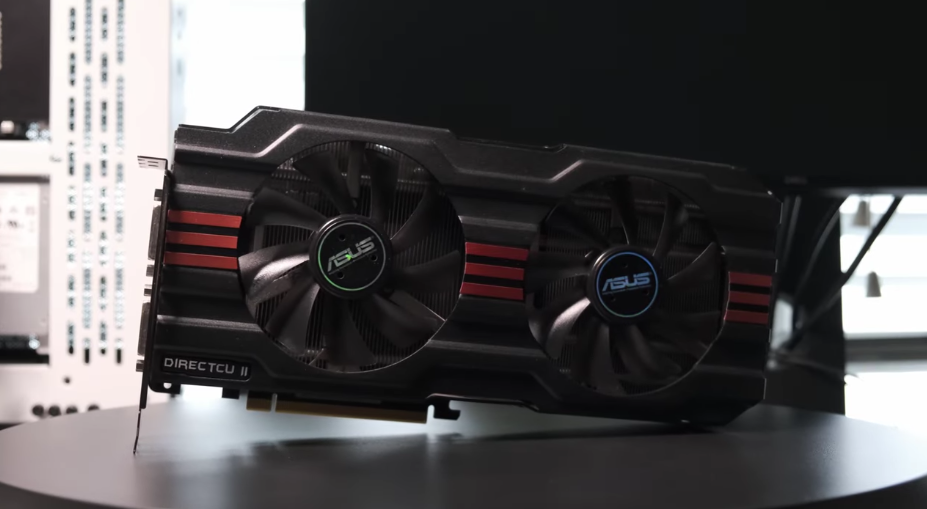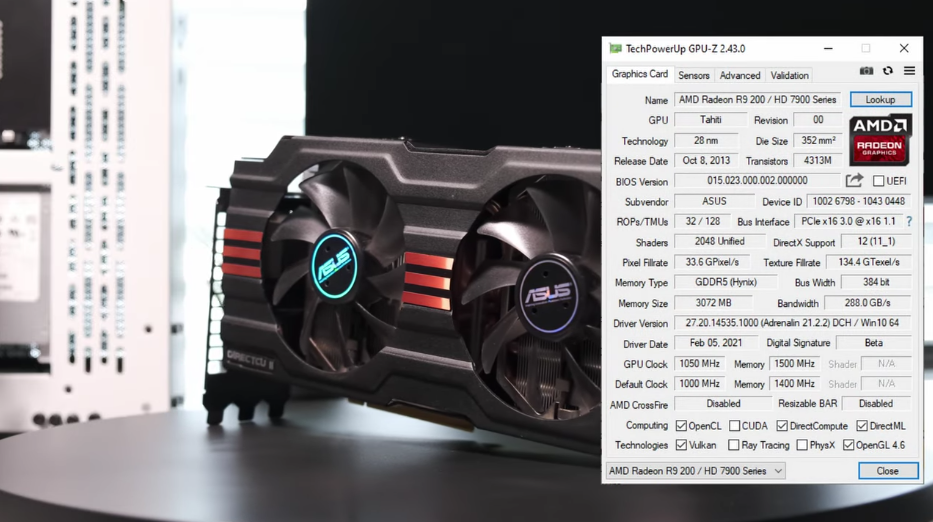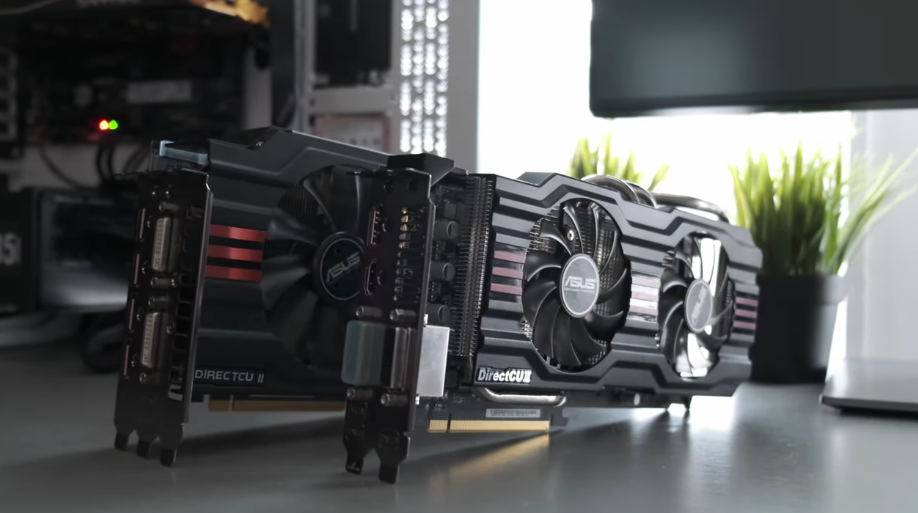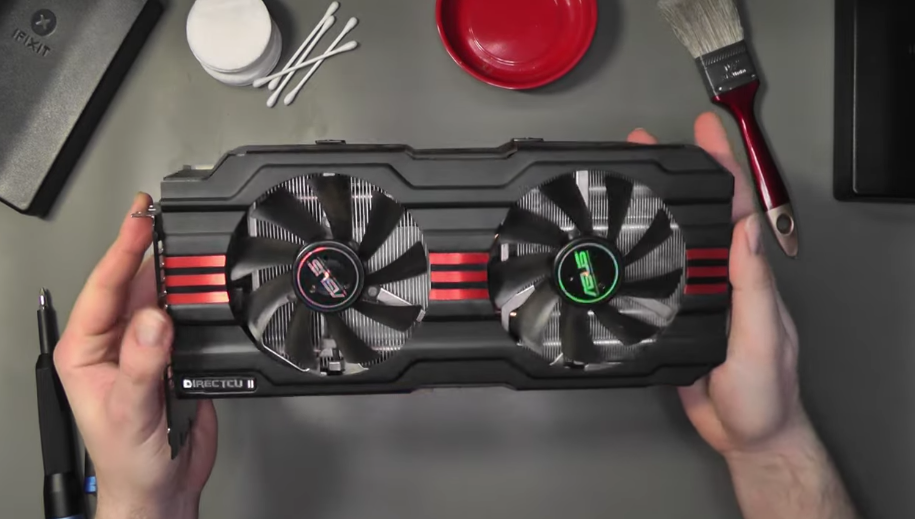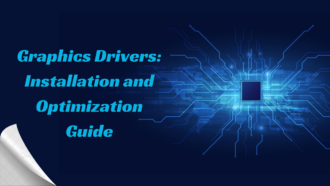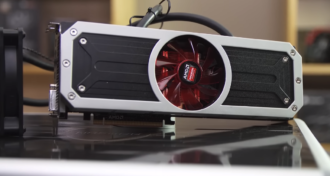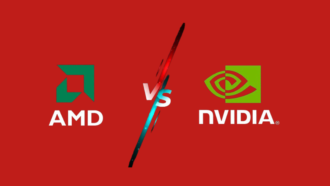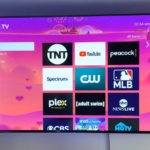Use Radeon HD 7970 GHz Edition to Take Your Gaming to the Next Level
- 1 Radeon HD 7970 Specs
- 1.1 What Is In The Box?
- 1.2 Technical Details and Architectural Plans
- 1.3 The GCN Architecture for Graphics Core Next
- 1.4 The Innovative Methods of the Radeon HD 7970 GHz Edition
- 1.5 Performance with Radeon HD 7970 GHz Edition’s Overclocking Potential
- 1.6 Effects and Legacies in the Gaming Realm
- 1.7 How Well Does the Radeon HD 7970 GHz Allow You to Play Games?
- 2 Should I buy Radeon HD 7970?
- 3 Conclusion
- 4 Frequently Asked Questions
In Short
- Radeon HD 7970 GHz Edition’s revolutionary Graphics Core Next (GCN) architecture revolutionised parallel computing.
- Crysis 3 and Battlefield 3, both powerhouses at the time, were brought to life with the GHz Edition.
- The Radeon HD 7970 GHz Edition cemented AMD’s dedication to high-performance graphics (HPG) solutions and influenced following GPU generations even after its launch.
The Radeon HD 7970 GHz Edition has achieved legendary status as a symbol of revolutionary performance and design in the dynamic world of graphics cards. When AMD unveiled its graphics card in 2012, it stunned the gaming and enthusiast communities with its groundbreaking graphics processing capability and performance metrics. Learn more about the Radeon HD 7970 GHz Edition—its background, design, specs, features, and gaming impact—in this comprehensive review.
Radeon HD 7970 Specs
| Specifications | Details |
| GPU Architecture | Graphics Core Next (GCN) |
| GPU Model | Tahiti XT |
| Manufacturing Process | 28nm |
| Stream Processors | 2048 |
| Texture Units | 128 |
| ROP Units | 32 |
| Base Clock | 1000 MHz |
| Boost Clock | 1050 MHz |
| Memory Type | GDDR5 |
| Memory Size | 3GB |
| Memory Bus | 384-bit |
| Memory Clock | 1500 MHz (Effective) |
| Memory Bandwidth | 288 GB/s |
| Thermal Design Power | Approximately 250W |
| DirectX Support | DirectX 11.1 |
What Is In The Box?
- The main part is the graphics card containing the Tahiti XT GPU with the given RAM, stream processors, and clock rates.
- The user handbook or installation guide explains how to insert the graphics card into your computer.
- Your choice of a driver installation disc or instructions for getting the most recent drivers for your graphics card.
- The power connectors in your system, such as the 8-pin and 6-pin PCIe power connectors, can be transformed into the necessary inputs for the graphics card by using the power adapters that come with the card, depending on its design.
- The graphics card may come with a CrossFire bridge in multi-GPU setups if it supports the technology. You may improve graphics performance by connecting two compatible graphics cards using this bridge.
- A case badge, stickers, or other brand- or graphics card-related promotional materials may be included by some manufacturers as extras.
- Retail packaging for graphics cards and accessories usually includes branding, product photos, and important specs.
Technical Details and Architectural Plans
Built on the 28nm manufacturing process, the Tahiti XT GPU powers the Radeon HD 7970 GHz Edition. The graphics card’s central processing unit (CPU) has an incredible 4.3 TFLOPS in raw computational capability thanks to its 2048 stream processors, 128 texture units, and 32 ROP units. A base frequency of 1000 MHz and a boost clock of 1050 MHz give this model the GHz Edition designation, highlighting its ability to offer faster clock rates than its predecessor.
The card’s 384-bit memory interface and enormous 3GB GDDR5 memory allow it to achieve an effective memory clock of 1500 MHz. The Radeon HD 7970 GHz Edition’s high memory bandwidth and sophisticated design made short work of demanding graphic rendering tasks, including high-resolution textures, multiple monitors, and complicated sceneries.
The GCN Architecture for Graphics Core Next
The Radeon HD 7970 GHz Edition is based on AMD’s groundbreaking Graphics Core Next (GCN) architecture, which greatly enhanced graphics processing efficiency. GCN improved resource utilisation for computational and gaming tasks by introducing a parallel computing architecture. Later, graphics card releases from AMD were built on top of the GCN architecture, which offered improvements in tessellation, DirectCompute speed, and shader efficiency. Because of its exceptional computing skills, the Radeon HD 7970 GHz Edition was well-respected by gamers, content creators, and industry experts.
The Innovative Methods of the Radeon HD 7970 GHz Edition
The Radeon HD 7970 GHz Edition brought state-of-the-art innovations that improved the gaming experience as a whole and its sheer power. The GPU could enter a low-power mode while not in use, thanks to AMD’s ZeroCore Power technology, which reduced energy usage during idle periods. Not only did this aid in energy conservation, but it also kept the game area cooler and quieter. Also, the GHz Edition was compatible with AMD Eyefinity, so players could set up massive multi-monitor setups to enjoy their games in 360 degrees. Fans looking for the pinnacle of gaming performance loved the Radeon HD 7970 GHz Edition for its rich graphics and lightning-fast frame rates.
Performance with Radeon HD 7970 GHz Edition’s Overclocking Potential
Because of its remarkable overclocking capability, the Radeon HD 7970 GHz Edition attracted enthusiasts and serious overclockers. The card’s base and boost clocks were already high, so manual overclocking added to the performance benefits. With the right cooling solutions, users could increase the clock rates of the GPU, which would extract even more performance and power from the card.
Effects and Legacies in the Gaming Realm
Graphics processing units (GPUs) that followed the Radeon HD 7970 GHz Edition significantly differed from their predecessors. Following the GHz Edition’s architectural breakthroughs, AMD remained dedicated to providing high-performance graphics solutions, thanks to the product’s popularity. Even after its original introduction, the Radeon HD 7970 GHz Edition was still making waves in the secondary and relic gaming sectors. Showing its long legacy, this classic GPU was sought after by enthusiasts and budget-conscious gamers for its mix of performance and price.
How Well Does the Radeon HD 7970 GHz Allow You to Play Games?
The Radeon HD 7970 GHz Edition established itself as a top graphics processing unit (GPU) for gaming shortly after its release. Thanks to its amazing graphics and flawless frame rates, it easily defeated the most difficult games of the day. Because of its optimised design and raw power, the GHz Edition handily destroyed games like Crysis 3, Battlefield 3, and Far Cry 3. The Radeon HD 7970 GHz Edition’s ability to handle high-resolution gaming was one of its primary features. Even at resolutions higher than 1080p, the card offered a lifelike gaming experience because of its robust memory interface and 3 GB of GDDR5 memory. Finally, players could attain never-before-seen levels of visual detail without compromising the frame rate.
Note: Modern games’ ultra-high definition textures may exceed the Radeon HD 7970 GHz Edition’s 3 GB VRAM. Games with more visual RAM or graphics may have lower fps. Due to its age, the GPU may need more official support and driver upgrades. Upgraded operating systems and apps may be tougher to utilise.
| PROS | CONS |
| Excellent performance in gaming and content production | Requires a powerful cooling system and a sufficient power supply due to its high TDP (250W) |
| Graphics Core Next (GCN) architecture for efficiency | Not compatible with the latest DirectX versions, potentially limiting compatibility with newer games |
| AMD Eyefinity support for multi-monitor setups | Limited VRAM (3GB) may struggle with very high-resolution graphics or the latest games |
| Great overclocking capabilities for enthusiasts | |
| ZeroCore Power technology for energy-saving |
Should I buy Radeon HD 7970?
Arguments in Support of Purchasing
- The Radeon HD 7970 GHz Edition is a superb secondary market graphics card for budget-conscious shoppers who don’t want to sacrifice performance.
- This card may appeal to gamers who miss top-tier GPUs like the Radeon HD 7970 GHz Edition.
- Even with basic needs, the Radeon HD 7970 GHz Edition should be plenty for recreational gaming and video editing.
- Consider the GHz Edition if you want a GPU with Eyefinity technology for realistic visuals and several displays for gaming.
Points To Remember
- GPUs have improved since the Radeon HD 7970 GHz Edition. Get a new graphics card for the latest features, performance, and compatibility.
- GPUs utilise more electricity than newer ones. For people who value environmental sustainability or have insufficient power, upgrading to a more efficient GPU may be worth considering.
- The GPU won’t run newer versions of the application since it only supports DirectX 11.1. For games created for the latest DirectX versions, a GPU that supports them is recommended.
Conclusion
The Radeon HD 7970 GHz Edition shows AMD’s commitment to performance and innovation for all things related to graphics cards. It became a renowned GPU because of its innovative design, state-of-the-art technology, and outstanding gaming performance.
Frequently Asked Questions
What is the GCN architecture?
AMD GPU architecture is Graphics Core Next (GCN). The Radeon HD 7970 GHz Edition introduced GCN, which improved parallel computing, tessellation, and graphics processing efficiency.
What are the key specifications of the Radeon HD 7970 GHz Edition?
A Tahiti XT GPU, 2048 stream processors, 128 texture units, 32 ROP units, 3GB of GDDR5 memory with a 384-bit memory interface, and 1000 MHz and 1050 MHz base/boost clock rates are the main specs.
How does the Radeon HD 7970 GHz Edition perform in gaming?
The GPU handles demanding games from its period with good frame rates. AMD Eyefinity technology makes it ideal for high-resolution gaming and multi-monitor setups.

